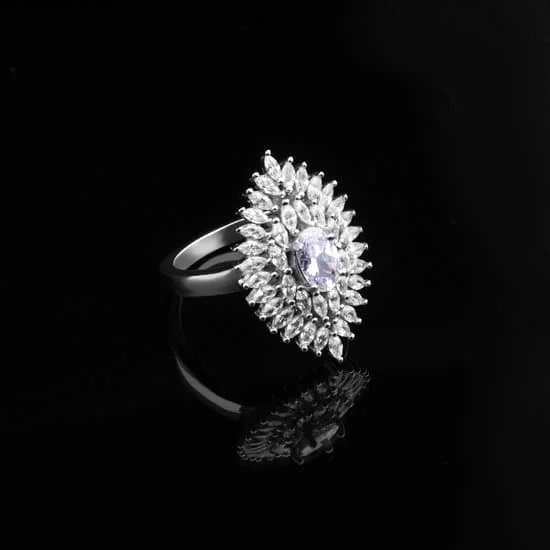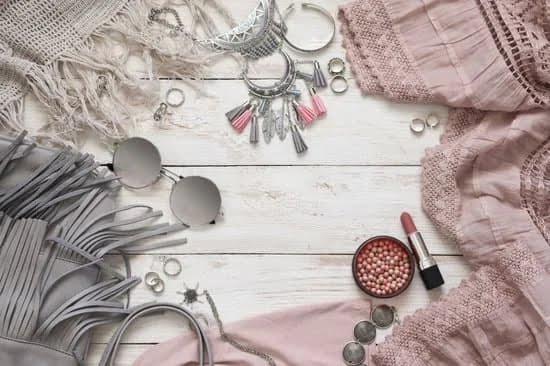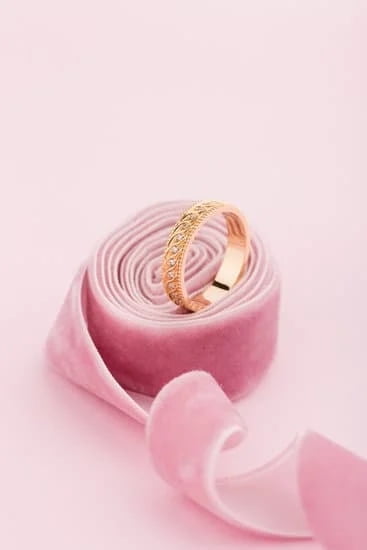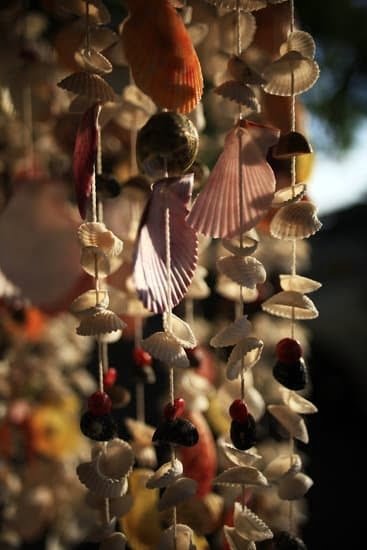Knot tying is an essential skill to master when creating beaded jewelry. Knowing how to tie knots in beaded jewelry is crucial for ensuring the durability and longevity of your designs. Whether you are a beginner or seasoned jewelry maker, understanding the proper techniques for knot tying will elevate the quality of your pieces.
When it comes to beadwork, knots play a significant role in securing beads in place and preventing them from slipping off. These knots not only serve a practical purpose but can also add a decorative element to your jewelry designs. With the right tools and materials, along with the know-how on different types of knots, you can create stunning pieces that stand the test of time.
In this article, we will explore why knot tying is important in beaded jewelry making, discuss the essential tools and materials needed for knot tying, provide a step-by-step guide on how to tie knots in beaded jewelry, delve into the different types of knots used in beadwork, and offer tips and tricks for tying knots with beads of various sizes.
Let’s dive into the world of knot tying as we unravel the secrets to creating beautiful and sturdy beaded jewelry pieces.
Why Knot Tying Is Important in Beaded Jewelry Making
Knot tying is a crucial technique in beaded jewelry making as it serves several purposes. Firstly, knots help secure the beads in place and prevent them from sliding around on the stringing material. This ensures that your finished jewelry piece is not only visually appealing but also durable and long-lasting. Additionally, knots create spacing between each bead, allowing them to stand out individually and enhancing the overall design of the jewelry.
To successfully tie knots in beaded jewelry, certain tools and materials are essential. A pair of sharp scissors is necessary for cutting the stringing material to the desired length, while tweezers can be used to manipulate small beads and tighten knots.
Beading cord or thread is typically used as the base material for knot tying, with options like nylon, silk, or cotton available depending on preference. It’s important to choose a strong and flexible thread that will withstand regular wear and tear.
When learning how to tie knots in beaded jewelry, following a step-by-step guide can be incredibly helpful. Start by threading the beads onto the stringing material and then creating a loop at one end before securing it with a knot. Make sure to leave some space between the last bead and the knot so that there is room for movement.
Continue adding beads along the stringing material, periodically tying knots to keep them in place. Experiment with different types of knots such as overhand knots or surgeon’s knots to see which works best for your design. With practice and patience, you’ll soon master the art of knot tying in beaded jewelry making.
Essential Tools and Materials Needed for Knot Tying
When it comes to creating beaded jewelry, mastering the art of knot tying is essential. Not only does it ensure that your jewelry pieces are securely put together, but it also adds a beautiful finishing touch to your designs. Before delving into the step-by-step process of how to tie knots in beaded jewelry, it’s important to gather all the necessary tools and materials.
One of the key tools you will need for knot tying in beaded jewelry is a good pair of tweezers or flat-nosed pliers. These tools will help you handle small beads and cords with precision, making the knot tying process much easier and more efficient. Additionally, having a sharp pair of scissors on hand is crucial for trimming excess cord after tying your knots.
In terms of materials, you’ll need high-quality beading thread or cord that is sturdy enough to withstand the wear and tear of everyday use. Silk or nylon threads are popular choices for knot tying in beaded jewelry due to their durability and flexibility.
Be sure to also have an assortment of beads in various sizes and shapes, as well as any clasps or findings needed to complete your jewelry pieces. By ensuring you have the right tools and materials on hand, you’ll be well-equipped to create stunning beaded jewelry designs with expertly tied knots.
Step-by-Step Guide on How to Tie Knots in Beaded Jewelry
Tying knots in beaded jewelry is an essential skill that every jewelry maker should master. Not only do knots provide security by keeping the beads in place, but they also add a decorative element to your designs. Whether you are a beginner or an experienced crafter, learning how to tie knots properly will elevate the quality of your beaded jewelry pieces.
One of the most common knots used in beaded jewelry making is the simple overhand knot. To tie this knot, start by threading your string through the beads and then create a loop with the string. Pass the end of the string through the loop and tighten the knot close to the bead. This knot is great for securing beads in place and can be easily hidden within your design for a seamless look.
Another popular knot for beaded jewelry is the surgeon’s knot, which is ideal for preventing beads from slipping off the string. To tie a surgeon’s knot, overlap two strings and tie an ordinary overhand knot. Then make another overhand knot using one of the strings double as you make it.
Pull both knots tight together to secure them in place and ensure that your beads stay put. The surgeon’s knot is especially useful when working with heavier beads or materials that have a tendency to slide around.
| Knot Type | Description |
|---|---|
| Overhand Knot | A simple and basic knot used to secure beads in place. |
| Surgeon’s Knot | An extra secure knot ideal for heavy beads or slippery materials. |
Different Types of Knots Used in Beaded Jewelry Making
When it comes to creating beaded jewelry, mastering the art of knot tying is essential. Different types of knots can be used in beaded jewelry making to not only secure the beads in place but also add a decorative element to your designs. Each type of knot serves a specific purpose and understanding how to tie them can take your creations to the next level.
Overhand Knot
The overhand knot is one of the most basic knots used in beaded jewelry making. It is commonly used to prevent beads from sliding off the end of a stringing material. To tie an overhand knot, simply create a loop with the stringing material, then pass the end through the loop and pull tight. This simple knot can be used at the beginning and end of a necklace or bracelet design.
Square Knot
The square knot, also known as a reef knot, is another commonly used knot in beaded jewelry making. It consists of two overhand knots tied in opposite directions, creating a flat and symmetrical knot. The square knot is often used to join two strands of cord or thread together in macramé designs or as a decorative element within a piece.
Sliding Knot
A sliding knot is an adjustable closure that is perfect for bracelets and necklaces that need to fit different wrist or neck sizes. To create a sliding knot, you will need to use an additional piece of cord or thread than what you would typically use for your design. By following specific steps on how to tie this unique knot, you can easily adjust the length of your jewelry piece by sliding the knots along the cord.
Tips and Tricks for Tying Knots With Beads of Various Sizes
When it comes to creating beaded jewelry, one of the essential skills to master is how to tie knots with beads of various sizes. Knot tying not only helps secure beads in place but also adds a decorative touch to your designs. Whether you are a beginner or an experienced jewelry maker, here are some tips and tricks to help you navigate the challenge of tying knots with different bead sizes:
- Choose the Right Cord: The type and thickness of the cord you use can greatly affect how well your knots hold up, especially when dealing with beads of various sizes. For smaller beads, opt for a finer cord such as silk thread or nylon beading thread. For larger beads, consider using thicker cords like leather or waxed cotton.
- Adjust Knot Tightness: When tying knots in beaded jewelry, it’s important to find the right balance between tightness and flexibility. If your knots are too loose, the beads may shift around too much; if they are too tight, they could damage delicate beads or compromise the overall design. Practice adjusting the tightness of your knots until you find the perfect fit.
- Use Bead Mats: Working with beads of different sizes can be challenging, especially when trying to tie knots close to them without causing damage. Utilize bead mats to keep your beads in place while working on knot tying. These mats provide a soft surface for your jewelry-making projects and prevent beads from rolling away.
These tips and tricks can help you tackle the intricacies of tying knots with beads of various sizes in your beaded jewelry projects. Remember that practice makes perfect when it comes to mastering this skill, so don’t be discouraged if it takes some time to get comfortable with knot tying techniques for different bead sizes. With patience and determination, you’ll soon create stunning pieces that showcase your craftsmanship and creativity in beaded jewelry making.
Common Mistakes to Avoid When Tying Knots in Beaded Jewelry
When creating beaded jewelry, tying knots correctly is essential to ensure the durability and longevity of your designs. However, there are common mistakes that beginners often make when it comes to knot tying in beaded jewelry. By being aware of these mistakes and knowing how to avoid them, you can improve the quality and overall look of your handmade pieces.
Here are some common mistakes to avoid when tying knots in beaded jewelry:
- Using the wrong type of thread or cord: Using a thread or cord that is too thick or too thin for the beads you are using can result in knots that are either too bulky and visible, or too weak and prone to breaking.
- Not securing the knot properly: Failing to secure the knot properly by not pulling it tight enough or not adding a dab of glue can lead to knots unraveling over time, causing your jewelry to fall apart.
- Not spacing out your knots: If you don’t space out your knots evenly along the length of your beaded jewelry, you may end up with gaps between beads or uneven tension, affecting the overall appearance of your design.
To avoid these common mistakes and create professional-looking beaded jewelry, it’s important to practice proper knot tying techniques. By following a step-by-step guide and paying attention to the tools and materials you use, you can enhance the quality and craftsmanship of your handmade creations. Remember that practice makes perfect, so don’t be afraid to experiment with different types of knots and bead sizes to find what works best for your unique designs.
Creative Ways to Incorporate Knots Into Your Beaded Jewelry Designs
When it comes to creating unique and stylish beaded jewelry pieces, incorporating knots into your designs can add a special touch. Knots not only serve as a functional element to keep beads in place, but they can also enhance the overall look of your jewelry. By adding knots strategically, you can create interesting patterns, textures, and shapes that will make your pieces stand out.
Enhancing Texture and Dimension
One creative way to incorporate knots into your beaded jewelry designs is by using them to add texture and dimension. By tying intricate knots between beads or around focal points, you can create a more dynamic and visually appealing piece. Consider using different types of knots, such as square knots or adjustable sliding knots, to achieve varying textures and patterns in your designs.
Creating Statement Pieces
Another way to use knots creatively in your beaded jewelry designs is by making them a focal point of the piece. Instead of hiding the knots discreetly between beads, showcase them prominently as part of the design. You can use oversized knots as a centerpiece or incorporate intricate knotting techniques as the main feature of the jewelry. This will not only add interest to your creations but also make them truly unique and eye-catching.
Adding Personalized Touches
Knots in beaded jewelry can also be used to personalize your pieces and make them more meaningful. Consider incorporating initials, birthstones, or other meaningful symbols into your knot designs to create personalized jewelry for yourself or as gifts for loved ones. By weaving these elements into your knots, you can create one-of-a-kind pieces that hold sentimental value and tell a story through their design.
Final Thoughts and Inspiration for Your Next Beaded Jewelry Project
In conclusion, mastering the art of knot tying in beaded jewelry can truly elevate your creations to the next level. The intricate detail that knots add to your pieces not only enhances their aesthetic appeal but also ensures their durability and longevity. By taking the time to learn how to tie knots in beaded jewelry effectively, you are investing in the quality and craftsmanship of your designs.
One of the key aspects to keep in mind when learning how to tie knots in beaded jewelry is practice. As with any skill, practice makes perfect, so don’t get discouraged if your first attempts are not flawless. Take the time to familiarize yourself with different types of knots and techniques, experiment with beads of various sizes, and don’t be afraid to try new creative ways of incorporating knots into your designs.
Remember that every knot you tie is a unique expression of your creativity and passion for beaded jewelry making. Whether you’re a beginner or an experienced crafter, there is always room for growth and improvement in this craft. So gather your tools and materials, follow the step-by-step guide provided, and let your imagination run wild as you embark on your next beaded jewelry project. Happy knot tying.

Welcome to my jewelry blog! My name is Sarah and I am the owner of this blog.
I love making jewelry and sharing my creations with others.
So whether you’re someone who loves wearing jewelry yourself or simply enjoys learning about it, be sure to check out my blog for insightful posts on everything related to this exciting topic!





